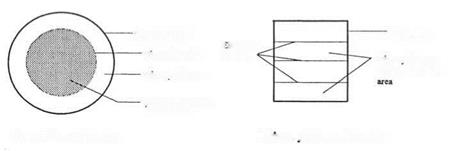HIMONT Plasma Science, Foster City, California, U. S.A.
Adhesion, whether the bonding of polymers or the adhesion of coatings to polymer surfaces, is a recurring and difficult problem for all industries that use these materials as key components in their products. Designers must often select specially formulated and expensive polymeric materials to ensure satisfactory adhesion (albeit even these materials often require surface preparation). In some cases, entire design concepts must be abandoned due to the prohibitive cost of the required polymer or the failure of crucial bonds.
Historically, surface treatments to improve adhesion of coatings to plastics consisted of mechanical abrasion, solvent wiping, solvent swell that was followed by acid or caustic etching, flame treatment, or corona surface treatment. Each of these treatments has limitations, thus providing a strong driving force for the development of alternative surface preparation methods. Many of the common methods mentioned are accompanied by safety and environmental risks, increased risk of part damage, and expensive pollution and disposal problems.
Mechanical abrasion or sand blasting is operator sensitive, dirty, difficult to do on small parts, and often does not reach hidden areas of complex-part geometries. Although more effective than solvent-based methods, acid etching can easily result in overtreated and damaged parts in addition to serious hazard and disposal problems. For example, other than plasma treatment, the most effective method for improving the bonding of materials to fluoropolymers has been to etch the surface with a material commonly referred to as sodium etch. The process consists of a brief immersion of the component to be bonded in a solution of sodium naphthalene in tetrahydrofuran or other suitable solvent. Although sodium etch is quite effective in treating fluoropolymers, concerns with operator safety and the problems of disposal have caused many users to seek alternatives.
Flame and corona, although useful in oxidizing the surfaces of plastics, have limited utility in many applications. In addition, the transitory nature of these modifications prevents their widespread use in many applications. Corona treatment is limited to both the materials that are responsive to this method of surface preparation and the part configuration itself. Complex shapes cannot easily be treated, as the treatment quality is a function of the distance of the part from the electrode. Thus small-diameter holes and
surfaces that are difficult to access in complex parts prove particularly troublesome when treating these parts with corona discharge. The result is an uneven surface treatment at best. Since corona discharge surface treatments are typically conducted in ambient air, the process is subject to change from day to day as the environment changes in the location where corona treatment is being conducted.
 For many industrial applications of plastics that are dependent on adhesive bonding, cold gas plasma surface treatment has rapidly become the preferred industrial process. Plasma surface treatment, which is conducted in a vacuum environment, affords an opportunity to minimize or eliminate the barriers to adhesion through three distinct effects: (1) removal of surface contaminants and weakly bound polymer layers, (2) enhancement of wettability through incorporation of functional or polar groups that facilitate spontaneous spreading of the adhesive or matrix resin, and (3) formation of functional groups on the surface that permit covalent bonding between the substrate and the adhesive or matrix resin. Since plasma treatment is a process of surface modification, the bulk properties of the material are retained. The nature of the process also allows precise control of the process parameters and ensures repeatability of the process in industrial applications. Finally, several studies have demonstrated that these surface modifications can be achieved with minimum impact on the environment.
For many industrial applications of plastics that are dependent on adhesive bonding, cold gas plasma surface treatment has rapidly become the preferred industrial process. Plasma surface treatment, which is conducted in a vacuum environment, affords an opportunity to minimize or eliminate the barriers to adhesion through three distinct effects: (1) removal of surface contaminants and weakly bound polymer layers, (2) enhancement of wettability through incorporation of functional or polar groups that facilitate spontaneous spreading of the adhesive or matrix resin, and (3) formation of functional groups on the surface that permit covalent bonding between the substrate and the adhesive or matrix resin. Since plasma treatment is a process of surface modification, the bulk properties of the material are retained. The nature of the process also allows precise control of the process parameters and ensures repeatability of the process in industrial applications. Finally, several studies have demonstrated that these surface modifications can be achieved with minimum impact on the environment.
 30 июня, 2015
30 июня, 2015  Malyar
Malyar  Опубликовано в рубрике
Опубликовано в рубрике 